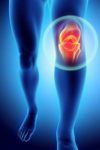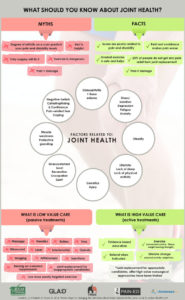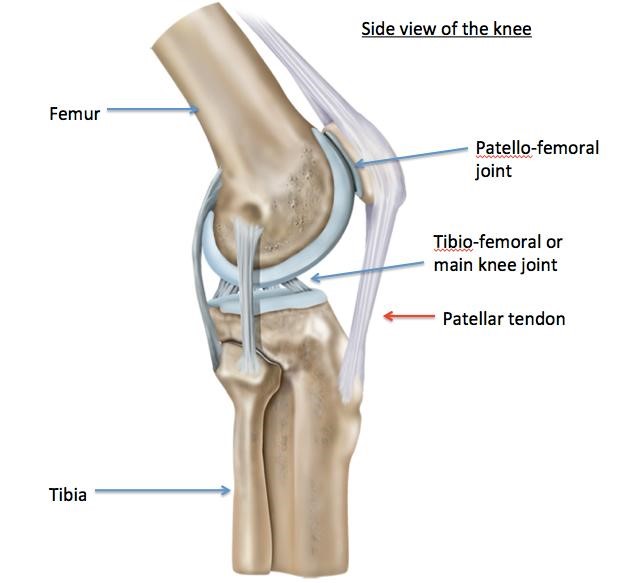
What is Osteoarthritis?
Arthritis refers to changes to the structure of a joint often associated with pain, stiffness, and swelling of the joint. Osteoarthritis is the most common form and it occurs in the hips, knees, shoulders, and spine. While an X-ray is used in diagnosing osteoarthritis (OA), the changes seen on scans are poorly linked to pain and disability levels. A common belief is that OA symptoms are due solely to “wear and tear” of the joint’s structures but we know that OA is more complex and influenced by several biological, psychological, social, and lifestyle factors.
Risk factors for developing OA include previous traumatic injury, having multiple steroid injections to the joint, excess belly fat, muscle weakness, inactivity or over-activity and depression. Other factors like having a negative mindset about the joint can change the nervous system and body’s chemistry making the joint structures more sensitive.
Flare-ups:
Flare ups are often predicted by factors like being run down, being stressed, doing unaccustomed activity and sleeping poorly and not by joint damage.
Osteoarthritis treatment:
OA treatment aims to address modifiable factors that influence a person’s pain experience. Current guidelines recommend personalised education, targeted exercise therapy and physical activity in line with the person’s exercise and weight loss goals.
Physiotherapy has an important role in getting clients back to a level of physical activity that they can enjoy and maintain. Exercise has been shown to relieve pain and increase function in all muscle, joint, spine and nerve pain conditions. Where functional limitation exist, treatments like massage, joint mobilisation and needling can be used to aid movement but these are short term treatments used as part of an active rehabilitation plan. It is important to improve fitness, strength and confidence as this will result in improved pain and function.
Exercise can be done on an individualised basis or in a group setting led by a qualified physiotherapist. As people with OA often have other conditions such as heart disease and diabetes the physiotherapist will liaise with someone’s GP prior to and during their treatment. We treat lots of patients with Osteoarthritis at our Blanchardstown and Castleknock clinics.
Important facts to note about OA are:
- Arthritis does not always get worse over time
- Arthritis pain is not solely caused by joint damage
- Exercise is not harmful to arthritic joints – in fact it is highly beneficial
- Arthritis does not always require surgery
- A 10% reduction in body fat if overweight results in a 50% reduction in pain.
If you are looking for a Physio for Osteoarthritis in Dublin, you can book in to see one of our experienced Physio’s to get a more individualised assessment and treatment approach? You can now book an appointment at our Blanchardstown Physiotherapy Clinic, our Castleknock Physiotherapy Clinic or our Old Bawn Physiotherapy clinic through our website www.somertonphysio.ie, email us on info@somertonphysio.ie or call us on 01 9069566.
Please do not hesitate to contact us if you have any questions about Osteoarthritis. You can follow us on our Facebook page and Instagram for more updates.






